A creepy true tale of scandal, murder, and a cat that made his home at The Tombs prison in Old New York.

“Old Nig,” my friend, comes every day—
A silent friend and leal;
No confidence does he betray,
He is as true as steel.“When I have shrunk from baser man,
And would my woe impart;
I’ve turned to Nig for no more than
a sympathetic heart.”
—Carlyle Wentworth Harris, Murderers’ Row, the Tombs, New York City, 1893
On March 23, 1891, Carlyle W. Harris, a 22-year-old medical student at the New York College of Physicians and Surgeons, was arrested for the death of his young wife, Helen Potts. District Attorney Charles E. Simms Jr. charged him with first-degree murder for poisoning his bride with an overdose of morphine in the form of sleeping pills.
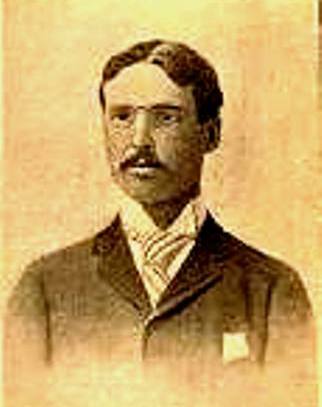
The Helen Potts murder was one of the most notorious crimes of the 19th century. It was loaded with scandal, and had everything the public could want in a news story: sex, murder, drugs, and an attractive, well-to-do young couple.
First there was the secret marriage ceremony at Civil Hall under alias names that neither family knew about until Carlyle’s botched abortion on Helen forced them to reveal the marriage (he reportedly killed the fetus but did not remove it from her uterus).
Then there was the medical class in which Carlyle learned all about the effects of morphine. And finally, there was the fact that Carlyle had admitted to a friend that he would often lace a girl’s ginger ale with whiskey to break down her inhibitions – and had even gone as far as marrying some girls by using a different name to get them into bed.
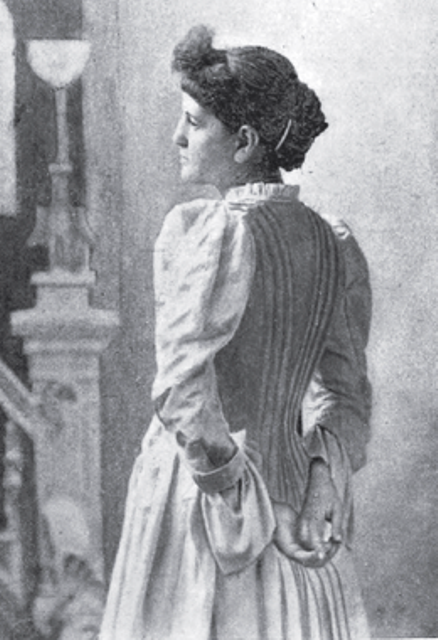
Yes, Carlyle Harris was the Robert Chambers (aka Preppie Killer) of the 1890s, and the New York press couldn’t get enough of him in the months and days leading to his trial and execution.
Following a trial in the Court of General Sessions in January 1892, the jury found Carlyle guilty of murder in the first degree.
Despite defense attorney William F. Howe’s request for an appeal, he was sentenced to death. Carlyle spent the last 15 months of his life in cell #8 on Murderers’ Row at New York City’s Halls of Justice – better known as The Tombs.
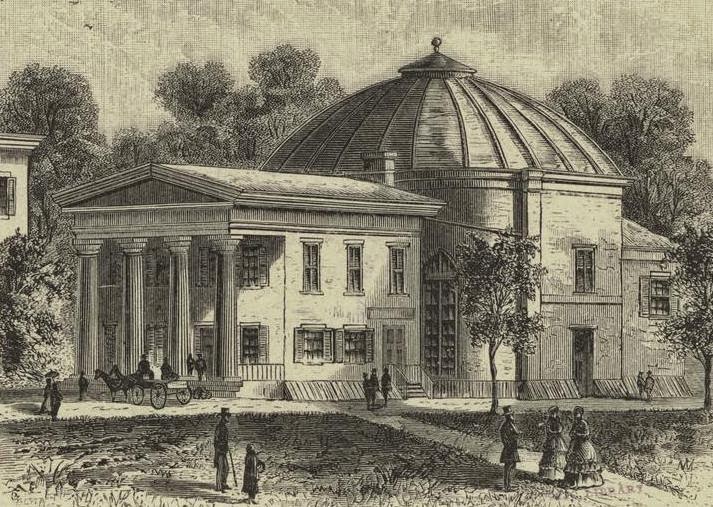
There are hundreds of old news articles, books, and websites about the Carlyle Harris case, so I’m not going to get into further details. However, there appears to be only one publication that made mention of Carlyle’s four-footed friend who visited him every day on Murderers’ Row at the Tombs.
In a story titled “The Tombs Cat Is Dead” on June 1, 1901, the Syracuse Evening Telegram noted that Carlyle had written a short poem about Old Nig, the large black cat that worked for 18 years catching mice in New York City’s prison (although certainly not proper today, Nig was a very popular name for black-haired cats, dogs, and horses in the 1800s).

A Kitten Arrives at the Tombs
Old Nig arrived at the New York City prison in 1893, when Tombs prison keeper Connelly brought the young kitten into the gloomy old building to help control the mice and rat population. His arrival came during the regime of Warden James Finn, Deputy Warden Mark Finley, and Night Deputy Warden Orr.
Over the next 18 years, the black cat served under eight administrations and reported to numerous wardens, including the much disliked Tammany Warden Thomas P. Walsh (aka, Fatty Walsh), Charles Osborne, John J. Fallon, and John E. Van de Carr.
When Old Nig first came to the Tombs, the prison was only about 45 years old, but it was already in deplorable condition. Constructed on the site of the old Collect Pond in 1838, the structure quickly began sinking into the soft, swampy ground, creating awful living conditions for the 300 prisoners crowded into the 143 cells. An 1846 New York Herald article described the perpetual dreariness brought on by the overflowing cells:
“[The prisoners are] here entombed to fester and offend until the moral atmosphere of the entire vicinage is impregnated with their odious exhalations, and the very soil seems to send forth in foul luxuriance the noxious shoots of crime and hardy guilt.”
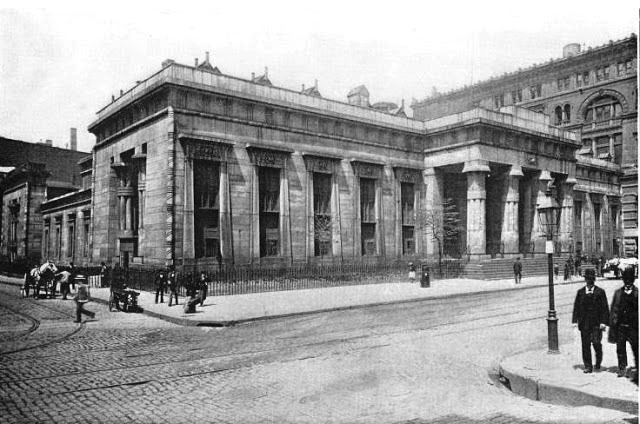
The Collect Pond
A few hundred years ago, the area that would become known as the notorious Five Points was a 48-acre freshwater lake called Collect Pond. Once the principal water source for colonial residents, the 60-foot-deep pond was also a favorite place for picnics, row boating and ice skating. Over the years, as tanneries, slaughterhouses, and other businesses dumped their garbage in the pond, it became highly polluted and odorous.
The Collect Pond was condemned, drained into the Hudson River and filled in by about 1813. In 1816, the Corporation Yards occupied the block of Elm, Centre, Leonard and Franklin Streets, on the ground which had filled in the pond.
The landfill job – a project designed to give work to the poor — was poorly done. In a span of less than ten years the ground began to subside. Unfortunately, the Common Council had already chosen the site for a new jail that would replace prisons the British had erected before the American Revolution.

When excavation for the foundation began in 1835, the builders knew they were in for a great challenge. Quicksand and water rose and fell with the tides, and threatened to derail the project.
Engineers were called in to devise a system of pilings using large hemlock trees lashed together. As The New York Times explained, the Tombs prison “was built upon a raft, inasmuch as the underlying foundation consisted of ranging planks imbedded or floated in the quicksand mud.”
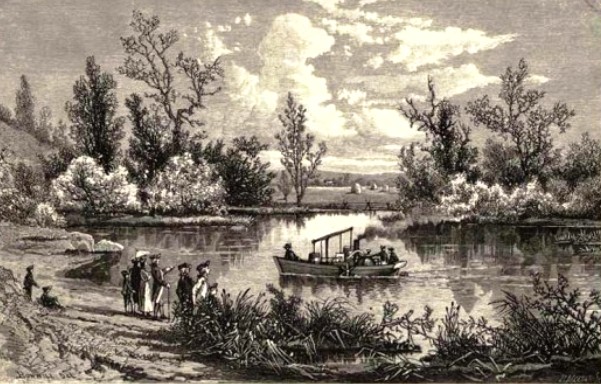
Five months after the Tombs opened, the building began to sink, warping the prison cells and causing cracks in the foundation through which water trickled in and created pools on the stone flooring. By the end of the Civil War the prison was considered one of the worst in the country.
Not only was the prison damp and moldy, it was also dangerously overcrowded. Originally designed for about 200 inmates, close to 400 inmates were being housed by the time Old Nig was making the rounds. Although there were about six “comfortable cells” with a view of the street for richer men who could afford to live in style, most of the men were vagrants who were assigned to the small and damp cells with cement floors.
Two prisoners sharing the single cot in each cell would sleep feet-to-head. If there were a third inmate, he would have to sleep on the cold stone floor. There was no exercise area so prisoners were confined to their cramped cells for 22 hours a day, and only let out to walk around the cast-iron walkway one hour in the morning and one in the afternoon.

The male prison, where Old Nig spent his days, had a high ceiling and a dark and narrow hall with four tiers of cells. On the ground floor were the mentally ill, and one floor above was Murderers’ Row, as well as a few cells for burglars and robbers. The third tier was devoted to those charged with grand larceny and similar felonies, while the fourth tier was assigned to those charged with minor offenses.
The Death of the Tombs, Carlye, and Old Nig
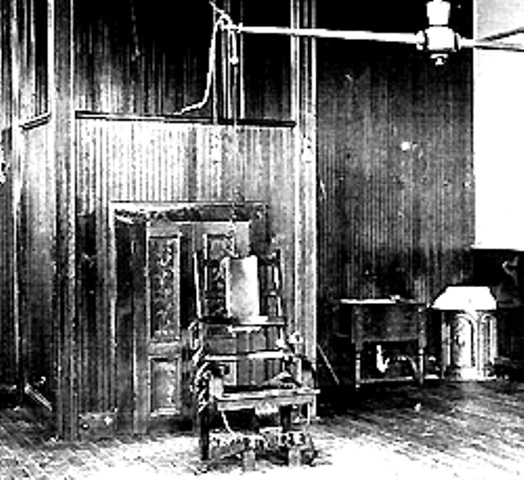
On May 7, 1893, Carlyle Harris died in the electric chair in the Death House at Sing Sing prison in Ossining, New York. More than 1,000 people came to watch the black flag be raised, signaling his death. Carlyle’s mother, still convinced of her son’s innocence, placed an ad in a New York newspaper stating:
Harris, Carlyle Wentworth, eldest son of Charles L. and Frances McCready Harris. Judicially murdered May 8, 1893.
On his tombstone at the Albany Rural Cemetery she had engraved:
Murdered by Twelve Men; If the Jury had Only Known.
Two years after Carlyle’s death, in 1895, the New York State Senate launched an investigation into the conditions at the Tombs and concluded that “its design and arrangement is radically and irremediably bad.” Finally, in 1902, after decades of planning, the prison was demolished and replaced. The second Tombs building was constructed on a deeper foundation and at a higher grade than the first one to avoid sinking.
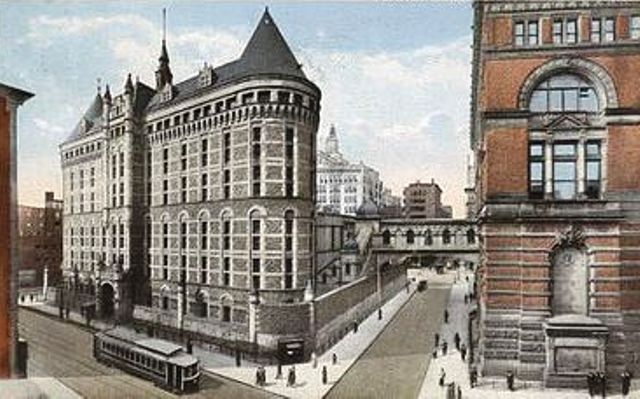
The second Tombs was replaced in 1941 by a new prison across the street on the east side of Centre Street. Although officially named the Manhattan House of Detention, it is still referred to as The Tombs.
Eight years after Carlyle’s death, on May 31, 1901, Old Nig died in the arms of Keeper Connelly. It was reported that the cat’s skin was going to be stuffed, and his lifeless form was going to be placed in the office of Warden John E. Van de Carr. Whether Old Nig’s taxidermied form survived the move to the new prison building in 1902 is not known.




